|
Costa
Azul |
| Portugal > Tourism > Lisbon > Costa Azul > History |
|
Museums, monuments, buildings and places of historical interest, archaeological remains that are open to the public, ancient churches and monasteries are all to be found on the Costa Azul and in the Setúbal area. This wide range of interesting places couples both a useful lesson in regional and local history with the pleasant contact of visiting historically rich monuments from the past. At a glance the historical and artistic value of the area can be taken in, all you need to do is choose the itinerary you feel most apt to suit your interest and not forgetting the recreational side, visit what this lovely area of Portugal has to offer. |
| Museums |
|
If your interest is in an museums, the Museu do Convento de Jesus in Setúbal is a must to visit. Valuable collections of national and foreign paintings, sculpture, jewellery and tiles dating from the fifteenth century to the present day may be viewed as well as periodical exhibitions of contemporary art. The gallery of visual art housed in the Casa de Bocage in Setúbal and the Galeria Municipal in Almada are other places open to the public where contemporary art is highlighted throughout the year.
|
| Archaeology |
|
In the Quinta do Anjo, Palmela, 'grutas funerárias da Quinta do Anjo' date back to the Neolithic age. The Chaolitic era is represented in the stations in Monte da Caparica (Almada), Monte da Tumba (Alcácer do Sal) Padrão and Castro da Rotura (both in Setúbal) where the relics are displayed in the local museums. Reference is made to a prolonged occupation which dates from the Iron Age to the Roman era in Alcácer and Setúbal..
|
| Monuments |
|
The medieval castles in Palmela, Sesimbra, Alcácer, although restored or remodelled in the more recent past, take the visitor back in time to the XIII and the XIX centuries when the Ordem do Santiago was in power. The XIV century city walls of Setúbal were erected at great cost by the population. Significant fragmented remains trace a chain of walls around this important urban area of the Middle Ages. The medieval tower in Outão can be clearly distinguished as a relic from the year six hundred. The tower Torre Velha in Almada is, however, not in such good condition. From the time of King Filipe and the Restauration, we have several gems of military architectural importance. The Sáo Filipe fortress from the end of the XVI century which is in excellent condition; the chain of city walls from the six hundreds surrounding the old fort which unfortunately no longer stands - both in Setúbal.
Religious architecture is more numerous and plays a significant role in what was constructed in the centuries before 1800 the late gothic of the lovely Santiago Church in Palmela, the church Matriz de Alcochete, the church Matriz de Santiago do Cacém, or the chapel Capela dos Cazal incorporated in the Matriz da Moira are all typical examples of this. In the church Matriz de Santiago one can contemplate embossed work from the Gothic period; the Santiago Matamouros which was donated by Queen Isabel's lady in waiting, the Princess Vataça. In Moita, one can visit the only surviving gothic tomb with adjacent statue - the one of Fernão do Cazal who was a hero in the Battle of Toro.
The finest examples of classic Renaissance style are found in Alcácer do Sal (Capela das Onz Mil Virgens situated in the convent of Santo António), in Palmela (Igreja de São Pedro), in Setúbal (Catedral de Santa Marta da Graça) in Montijo (Matriz) and in Alcochete (Igrejas de Nosso Senhora da Vida and da Misericordia). If you enjoy ancient art out of the museum environment, a visit to Sesimbra, to the Sala de Arte Sacra da Misencordia de Sesimbra is in order where an exceptionally beautiful panel by Gregório Lopes can be found. Ancient art can also be viewed in Santa Suzana near Alcácer or the Barroque sanctuary in Cabo Espichel, also the Misrincoria de Alcochete soon to be incorporated into the Confraria church museum.
|
| Portugal > Tourism > Lisbon > Costa Azul > History |
|
History |
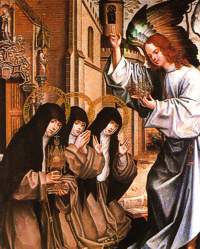 Museums
are not just huge ancient relics reminding us of man's past presence
but also privileged reminders of who we once were, who we now are
and the image we wish to project for the future. Worthy of the cultural
policy they have been given by town councils, the varied type of museums
that we have to offer to both resident and foreign visitors is rich
and diverse in scope. It provides an ample vision of natural and cultural
heritage on a local scale. From art galleries to natural reserves,
archaeological remains to the history of employment, a world full
of details awaits you...
Museums
are not just huge ancient relics reminding us of man's past presence
but also privileged reminders of who we once were, who we now are
and the image we wish to project for the future. Worthy of the cultural
policy they have been given by town councils, the varied type of museums
that we have to offer to both resident and foreign visitors is rich
and diverse in scope. It provides an ample vision of natural and cultural
heritage on a local scale. From art galleries to natural reserves,
archaeological remains to the history of employment, a world full
of details awaits you...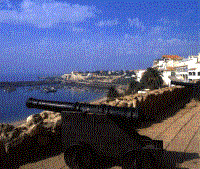 If
you are more interested in archaeology, your visit also starts in
Setúbal where man's past is beautifully displayed with plenty
of relics in the Museu de Arqueologia e Etnografia do Distrito
de Setúbal right from the remote past. Other valuable archaeological
museums can be found in Sesimbra (Museu Municipal), Alcácer
(Museu Municipal) and in Sines (Museu Arqueológico
Municipal), where artifacts of national and regional importance
are displayed. There are also nuclei of considerable importance in
the Municipal Museums of Santiago do Cacém, Alcochete and Almada
(this last one is still in the organisational phase).
If
you are more interested in archaeology, your visit also starts in
Setúbal where man's past is beautifully displayed with plenty
of relics in the Museu de Arqueologia e Etnografia do Distrito
de Setúbal right from the remote past. Other valuable archaeological
museums can be found in Sesimbra (Museu Municipal), Alcácer
(Museu Municipal) and in Sines (Museu Arqueológico
Municipal), where artifacts of national and regional importance
are displayed. There are also nuclei of considerable importance in
the Municipal Museums of Santiago do Cacém, Alcochete and Almada
(this last one is still in the organisational phase).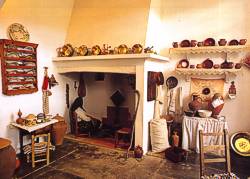 In our days, the increasing interest shown in ecology and preservation
of the environment has meant that different types of museum have been
founded for example eco-museums or
In our days, the increasing interest shown in ecology and preservation
of the environment has meant that different types of museum have been
founded for example eco-museums or 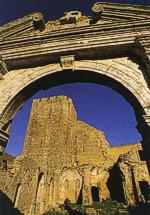 The
rich archaeological past is not only to be found in the material displayed
in the various museums. It is also found in inumerous archaeological
digs scattered over the region. Some of interest to the general public,
others of a more specific nature and some are still being investigated,
covering a chronological arc from the Neolithic period to the end
of the Roman occupation and the era of the Discoveries.
The
rich archaeological past is not only to be found in the material displayed
in the various museums. It is also found in inumerous archaeological
digs scattered over the region. Some of interest to the general public,
others of a more specific nature and some are still being investigated,
covering a chronological arc from the Neolithic period to the end
of the Roman occupation and the era of the Discoveries.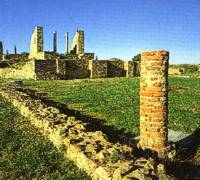 The
Roman colonization left important remains from the Porto dos Cacos
(Alcochete) Remnants of their occupation on an industrial level can
be found in the Baixo Sado area (salt fish factories and pottery factories).
Sanctuaries, thermal springs and a hippodrome (Miróbriga).
The
Roman colonization left important remains from the Porto dos Cacos
(Alcochete) Remnants of their occupation on an industrial level can
be found in the Baixo Sado area (salt fish factories and pottery factories).
Sanctuaries, thermal springs and a hippodrome (Miróbriga).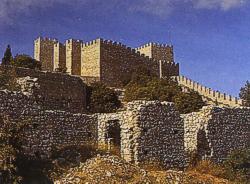 The
monuments to be found on the Costa Azul trace the History of Architecture
and Art in almost all sector from the Middle Ages to the present day.
The
monuments to be found on the Costa Azul trace the History of Architecture
and Art in almost all sector from the Middle Ages to the present day.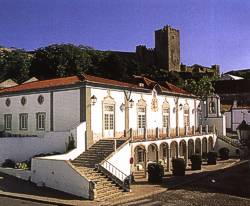 Other
architecture from the XVI and XVIII centuries comprises the renaissance
palaces of Bacalhoa and the Quinta das Torres in Azeitão
and the palace belonging to the Duques de Aveiro in the same town.
Other palaces and manor houses are scattered about among the villages
of the area. Santiago do Cacém in the south also boasts a host
of palaces and manor houses, as does the historical centre of Setúbal
with its beautiful Cosa do Corpo Santo, former Costa Azul Tourism
Office, lovely barroque construction with adjacent chapel, not forgetting
the palace Paços do Concelho de Palmela which date from
the XVII and XVIII centuries.
Other
architecture from the XVI and XVIII centuries comprises the renaissance
palaces of Bacalhoa and the Quinta das Torres in Azeitão
and the palace belonging to the Duques de Aveiro in the same town.
Other palaces and manor houses are scattered about among the villages
of the area. Santiago do Cacém in the south also boasts a host
of palaces and manor houses, as does the historical centre of Setúbal
with its beautiful Cosa do Corpo Santo, former Costa Azul Tourism
Office, lovely barroque construction with adjacent chapel, not forgetting
the palace Paços do Concelho de Palmela which date from
the XVII and XVIII centuries.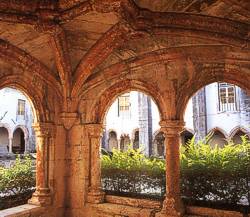 The
Manueline era is notably well represented in the Igreja e Convento
de Jesus in Setúbal, the Matriz in Torrão
and in the church doors of S Julião and the Convento
de S. Joâo in Setúbal. Also in ihe chapel Ermida
de Nossa Senhora de Salvas in Sines (Alentejo) which was built
under orders from the distinguished navigator Vasco de Gama who was
born there. Portals and windows from this period can be found all
over the area in small numbers.
The
Manueline era is notably well represented in the Igreja e Convento
de Jesus in Setúbal, the Matriz in Torrão
and in the church doors of S Julião and the Convento
de S. Joâo in Setúbal. Also in ihe chapel Ermida
de Nossa Senhora de Salvas in Sines (Alentejo) which was built
under orders from the distinguished navigator Vasco de Gama who was
born there. Portals and windows from this period can be found all
over the area in small numbers.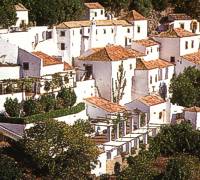 Fine
Barroque art awaits you in this region with the magnificent tiles
and engravings found in the churches in Sesimbra, Alcochete, Alcácer
and especially in Setúbal and Azeitão. The chapels found
in the Fortalezas S Fillpe and Outão and the churches
of S. Simão and S. Lourenço in Azeitão,
and S. João, da Conceiçáo and da
Graça in Setúbal are worthy of note. A particularly
interesting centre is composed of convents from the Capuchos
which can be found all over the Setúbal peninsula (Caparica,
Verderena, Alferrara, Arrábida). As this is a region with good
harbours, many people from this area were involved in the expansion
overseas and returned from the East with ivory statues: the most remarkable
being the ones in the Ermida do Senhor dos Navegantes in Montijo.
Fine
Barroque art awaits you in this region with the magnificent tiles
and engravings found in the churches in Sesimbra, Alcochete, Alcácer
and especially in Setúbal and Azeitão. The chapels found
in the Fortalezas S Fillpe and Outão and the churches
of S. Simão and S. Lourenço in Azeitão,
and S. João, da Conceiçáo and da
Graça in Setúbal are worthy of note. A particularly
interesting centre is composed of convents from the Capuchos
which can be found all over the Setúbal peninsula (Caparica,
Verderena, Alferrara, Arrábida). As this is a region with good
harbours, many people from this area were involved in the expansion
overseas and returned from the East with ivory statues: the most remarkable
being the ones in the Ermida do Senhor dos Navegantes in Montijo.